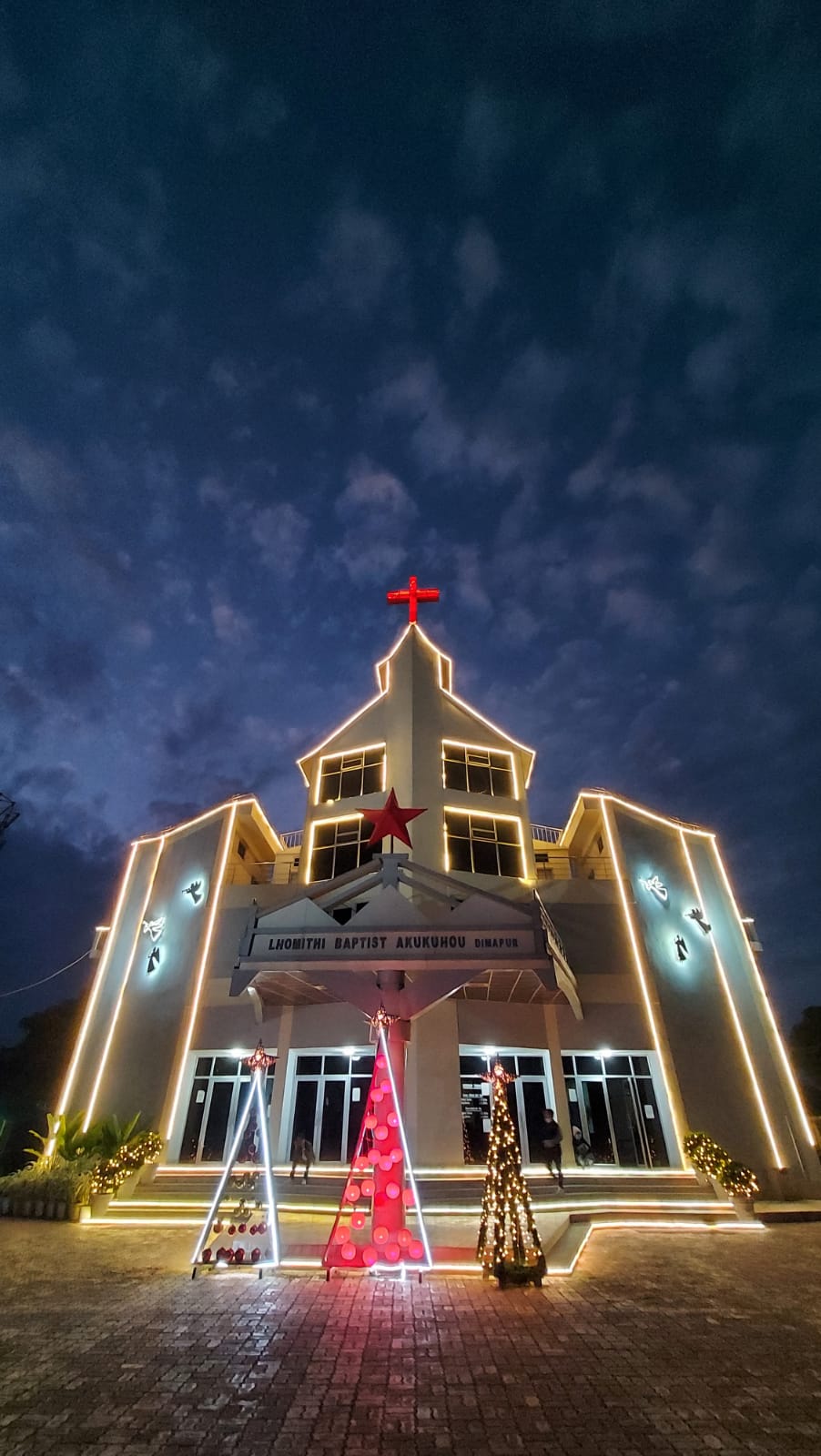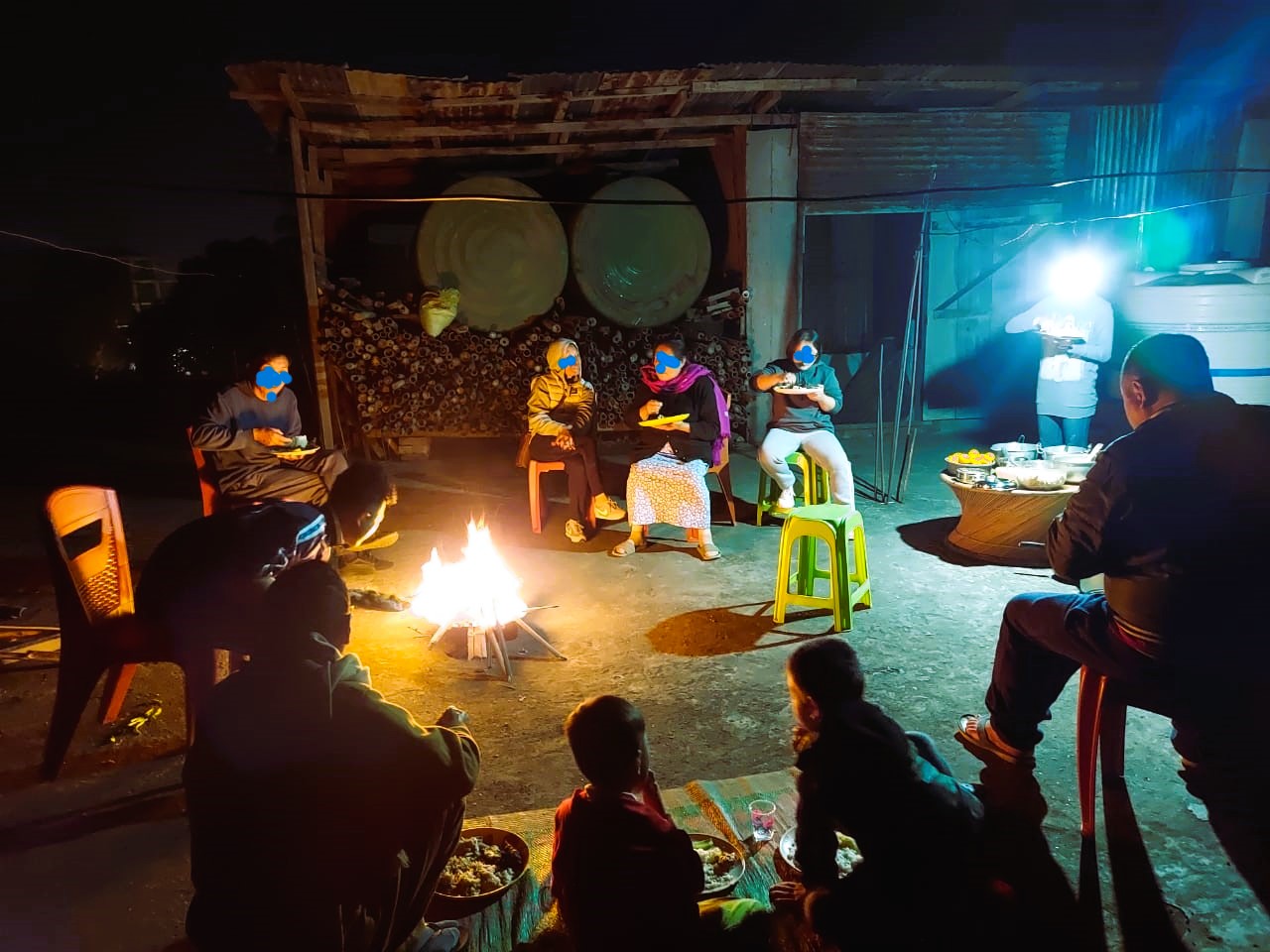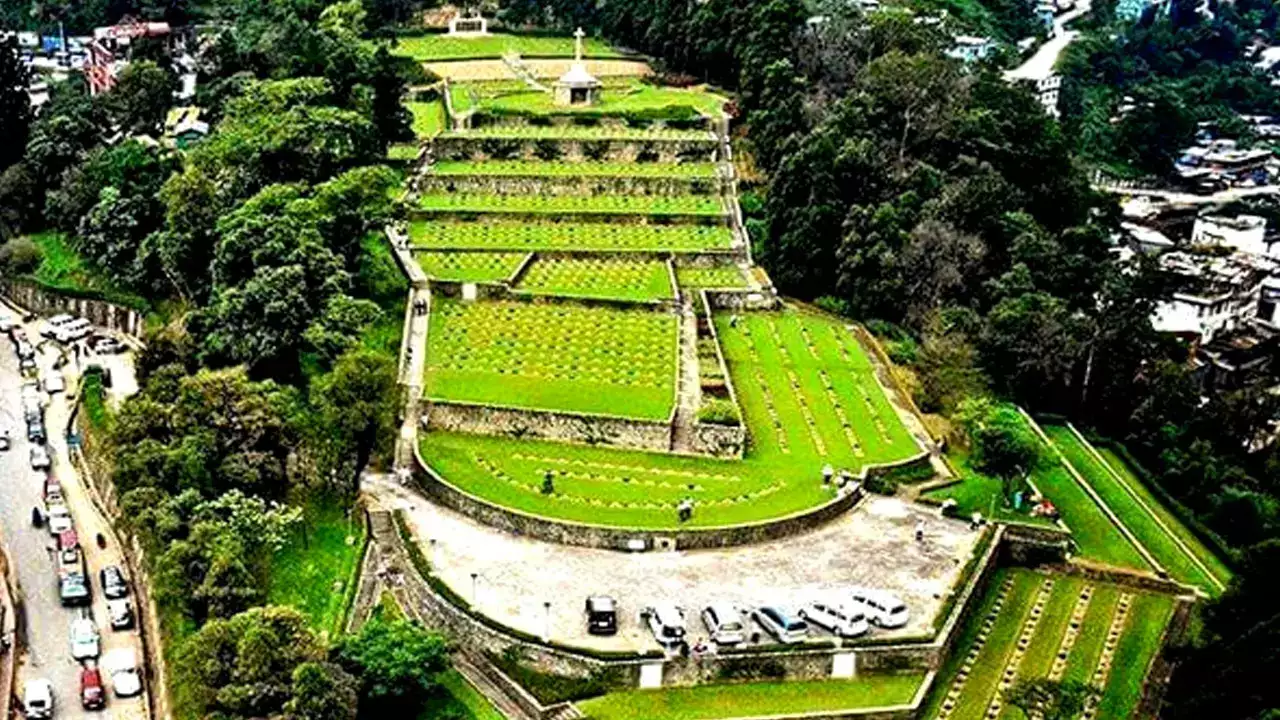.jpg)
Rita Farhat Mukand
Back in 1999, I got an invitation to visit Nagaland during Christmas. It was not the easiest time to visit as the state was still emotionally steaming after the smoke of guns erupting from clashes that were triggered in 1992 between two tribes. The opportunity to visit the North East at Christmas was irresistible and I took a step of faith forward with mixed emotions of trepidation, thrill tinged with yearning for pure adventure.
Nagaland is a beautiful lush landlocked state located in the northeastern part of India, sharing borders with Arunachal Pradesh to the North, Assam to the west, Manipur to the South, and the Sagaing Region of Myanmar (Burma) to the East.
As a group travelling together, we decided we would go by train through a distance of 1222 kilometers or 25 hours and 38 minutes. During the journey, most of the train vendors sold tea, samosas, and puri-aloo but much to the dismay of our Naga friends, there were no rice meals sold during this trip and it was here that I discovered Nagas languish without rice! It was amusing to see one of the Naga girls, Jemtila, nearly hug a startled vendor out of joy because he was selling a meal of rice and curry after a long time!
Due to the Bodo insurgency which was still simmering across the North East, it was fascinating to find heavy-armed security forces marching all over the railway stations and we were heavily checked at railway stations, quite an experience, reminding us that there was still trouble brewing around. Still, in the midst of this, the magic of Nagaland is the indomitable spirit of Nagas finding joy in celebrating Christmas and other occasions invoking the sweet joys of life with simplicity. Nagas are well-known for their open, generous personalities, holding no rancour in their hearts.
With relief, after a two-day exhaustive travel, we made our final train stop at Dimapur, the largest city in Nagaland, the chief gateway and commercial hotspot of Nagaland.
A traditional Naga church surrounded by poinsettias and cherry blossom trees
Dimapur nestled at the banks of the Dhansiri River was bursting with noise and clamor of Indian migrants making big business in the hustling bustling city. During December, the city was blooming red with poinsettias, and charming tiny cottages were lit up with stars and lights, welcoming the approaching Christmas Day, and the first home we stopped at offered us Christmas cake and tea. We visited one of the churches in Dimapur at our stopover.
The long drive of 128.5 kilometers from Dimapur to Kohima and then finally to Wokha drove us through picturesque landscapes of towering pine trees, magnificent hues of wildflowers, ancient glistening churches on slopes, while tiny lights glowed all over the hills towards the evening. With little breaks for lunch, which was the famed Naga sticky rice, soupy preparations with green leaves with meat, and steaming cups of black coffee in tiny shops nestled on the hills, our trip was made lighter but we were tired by the time we reached our host, Mary’s home in Wokha, the land of Lotha-Naga tribes.
Mary’s enchanting house full of happy memories was made mostly of bamboo. Her grandmother, mother, father, brothers, and sisters immediately made us feel at home, talking mostly in Nagamese, a Creole language, so we communicated with each other in broken English and we would often burst out laughing hilariously due to our comical miscommunications.
After steaming hot baths in an outdoor bathroom, we were ushered into a huge warm kitchen glowing with its roaring chimney fire, heating our rattling bones because it was December, the start of the chilly winters in the North East. After a delicious meal of sticky rice, fermented bamboo shoots (bastenga) a meat preparation, and soupy preparations enriched with green leaves and meat, we later settled down with hot black coffee, We had the sweetest sleep in Mary’s bedroom which she shared with her grandmother.
Early at around 4 a.m., I was awakened by a calming droning sound to discover Mary’s grandmother swaying to and fro, chanting prayers, as she did always for decades, praying for the family and others. I was deeply touched by her spirituality which reverberated through to her children and grandchildren. Nagas are very spiritual with a deep reverence for God.
.jpeg) Mouth-watering gift hampers with wine, Christmas fruit cakes and other eateries.
Mouth-watering gift hampers with wine, Christmas fruit cakes and other eateries.
Our hosts arranged a series of places for us to visit and also asked a few of us to be their speakers for different functions. One of the evenings, I stood on a stage and shared a couple of positive stories from my life and anecdotes to encourage the audience. After this event, I was awe-sprung by the response of the women who streamed up to talk to us. I was particularly touched by one lady who told me with tears in her eyes, “Thank you so much for sharing this, it encouraged me. Please pray for us, our sons are in trouble, many of them got into drugs and they are lost, and cannot think, study, or work.”
I hugged her and assured her I would be praying. The history of substance abuse in Nagaland goes back to the late 1980s with surging use of substances among the youths as the area lies in the passage of the Golden Triangle, where there is easy access to drugs in the State, a common feature of conflict zones where militants use the drug money to finance their conflicts.
Nagaland holds insurmountable treasures hidden from the world, the roads were still unexplored and rocky and disconnected and underdeveloped. There are hardly any hotels, restaurants or tourist spots despite Nagaland’s ethereal beauty. One Naga lady, Neithou told me, “Nagaland is a very blessed land, if we plant one vegetable, it will flourish, and grow abundantly.”
The hospitality of Nagas is mind-blowing and during my forty-five-day stay there, we didn’t have a moment to sit in the house as each day we had the invitation to visit either a village or someone’s home. We travelled across villages in Wokha, Kohima, and Dimapur mostly. Our cuisines were exotic, from Akhuni fermented soya bean cakes, meat or added to meat dishes to enhance their flavour; one of the Naga famous dishes is meat with bamboo shoot curry. At one home, we were offered a delicacy, fried bees and a gigantic tree caterpillar which I gingerly declined but the others in the group with bravado munched it all up trying hard not to flinch!
 Dimapur Church
Dimapur Church
Wokha was glimmering with lights while Naga families and friends held night barbeques around merry crackling bonfires while they shared stories, jokes, and joyful memories and sang songs. One of the most magnificent features of Nagaland is their powerful singing during Christmas where their melodious voices echo from one hill to the others sounding like an army of angels, so electrifying sending delightful shivers down your spine. The Christmas season exuded vibes of spirituality and love. Singing is an integral part of the Naga culture heightened by their beautifully rich melodious voices and one would feel like a croaking frog beside a pure Naga singer!
During the days, we relished clear skies while sitting at night, star gazing amid the hills glittering with tiny lights in the cool Christmas air listening to songs, and warming our freezing hands and toes in front of bonfires. Eating endless Christmas cakes and sipping black coffee, soaking up the warmth of dancing bonfires, delicious barbeques, euphonious singing, and dinners of sticky rice, with finger-licking good dishes, one felt as if they touched the roof of Heaven because the comradeship, oneness, and love lay thick in the air like a celestial blanket.
Massive kitchens cemented families together as they sat around a gigantic table, talking and laughing, sharing happy stories with their fires blazing red hot with flames sputtering up their chimneys. Smoked meat, fermented soya beans, and tender bamboo shoots decorated their kitchens amid other herbs and stacks of firewood and coal.
The green hilly city of Kohima the capital of Nagaland was aglow during the Christmas season and Kohima is known as the homeland of the Angami Naga tribe, the city gets its name from 'Kewhira' or 'Kewhima,' signifying the land where the Kewhi flower grows. Meandering through the mountain ranges to reach its peak, Kohima offers a seamless and untouched blend of nature with the bountiful ancient traditions and culture of the local tribal community.
 Celebrations during Christmas in Nagaland
Celebrations during Christmas in Nagaland
The Nagas are believed to have defeated the Japanese from overtaking India through the Battle of Kohima when the Japanese U-Go march into India in 1944 during the Second World War suffered a setback when the Japanese attempted to capture Kohima Ridge but were defeated. Many Nagas are valiant skillful soldiers in the Indian Army. Kohima suffered heavy losses during their courageous fighting in World War II, commemorated by memorials at the Kohima War Cemetery. The Nagaland State Museum exhibits ancient weaponry, a ceremonial drum, and other traditional Naga cultural artefacts.
Wokha where I stayed is the home of the Lotha Nagas, an area rich in oil deposits, famed for its migratory Amur Falcons which soar on their daring voyages from Russia and China and then migrate over to Wokha and eventually spend the winter along the coastal Africa.
Going back to the geography of Nagaland, this rich mountainous state lies in northeast India, bordering Myanmar, home to diverse indigenous tribes. They celebrate festivals of different tribes' cultures throughout the year called the 'land of festivals and every tribal festival is celebrated brightly with rich and colourful traditional attires. The most spirited festival is the 'Hornbill Festival' where the songs of the ancient Nagas echo and its music resounds in the true spirit of the tribal men.

Kohima, capital of Nagaland
One of the expensive delicacies of Nagaland is Akini Chokibo is an of which means snails and akini refers to perilla seeds which are a sort of herb belonging to the mint family. Sometimes akhuni or some other meat is also added to the dish.
Thuthse is a fermented alcoholic beverage crafted from sticky rice, closely resembles Zutho which is also a fermented drink from sticky rice from Nagaland but distinguishes itself by being thicker, more potent, and possessing a sweeter taste.
The diet of sticky rice which Nagas cannot live without is a "sweet rice" or glutinous rice (despite being gluten-free), translucent, glossy, and highly adhesive texture when steamed is rich in fibre, it contributes to reducing the risk of diabetes, enriched copper, zinc, and B vitamins, which enhance the immune system, and builds robust bones, reducing the risk of osteoporosis.
ALSO READ: Bengal's Naya Basti gives peace vibes with Hindus, Muslims and Christian living in harmony
Naga food, devoid of oil had us all crying for a bit of oily food by the end of our visit! On one invitation when the host asked us what we would like to eat, we requested we just wanted parathas and aloo subzi and our magnanimous hosts took all the trouble to make us that! At the end of our visit to Nagaland, the loving people lavished us with all sorts of gifts including the most exquisite hand-woven shawls, made from pure wool keeping one warm in the bitter cold winters. I have treasured this shawl every frigid winter along with reminiscences of the most mesmerizing Christmas in Nagaland!
Rita Farhat Mukand is an independent writer in West Bengal
